
Researchers from the University of Michigan measured hormone levels in capuchin monkeys to decode how the stress response helps these monkeys weather environmental challenges.

Preparing for and adapting to a world irrevocably changed by climate change requires a multifaceted approach that engages clean energy solutions in the context of the built environment, economic displacement, public health, and environmental and energy justice. University of Michigan researchers are examining these areas, among others, with the goal of highlighting key steps to address this new normal. U-M experts are assessing local climate adaptation plans, examining ways to make ecosystems more resilient, and noting opportunities to deliver affordable, reliable, and clean energy services—especially to lower-income, minority populations who are disproportionately harmed by the climate crisis.

Researchers from the University of Michigan measured hormone levels in capuchin monkeys to decode how the stress response helps these monkeys weather environmental challenges.

Morning glory plants that can resist the effects of glyphosate also resist damage from herbivorous insects, according to a University of Michigan study.

In certain parts of the U.S., the ability of residents to prepare for and respond to flooding is being undercut on three different levels.
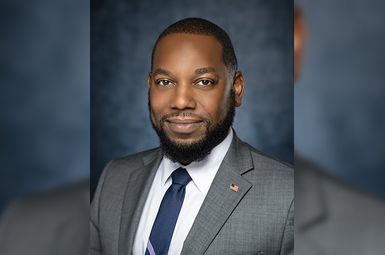
"Energy justice is this concept that really looks at how do communities participate in both the health environment and social impacts of our energy system, recognizing that the energy system has had certain burdens on communities. And so environmental justice is really saying that all communities, regardless of race and income and geography, should be afforded a clean environment."
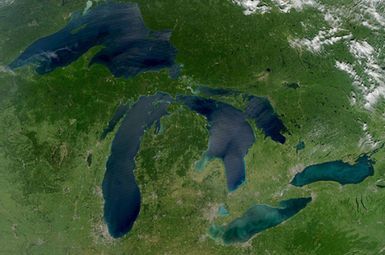
The U.S. National Science Foundation has awarded a three-year, $614,000 grant to U-M and its international partners to create a new research initiative that will address the socioeconomic vulnerabilities of climate migrants in the Lake Victoria Basin (LVB) and Great Lakes Region (GLR).

Converting home heating systems from natural gas furnaces to electric heat pumps is seen as a way to address climate change by reducing greenhouse gas emissions. But a new U-M study of 51 Southeast Michigan households shows that switching to efficient, cold-climate heat pumps would increase annual utility bills by an average of about $1,100.
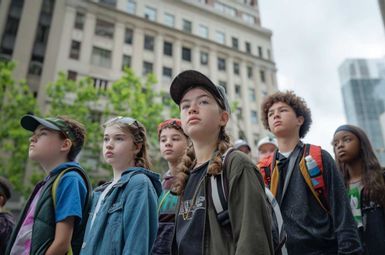
Nearly half of the young people surveyed on disaster preparedness indicated they felt unprepared for any type of disaster event during a period when catastrophic climate disasters are becoming increasingly frequent, says a U-M researcher.
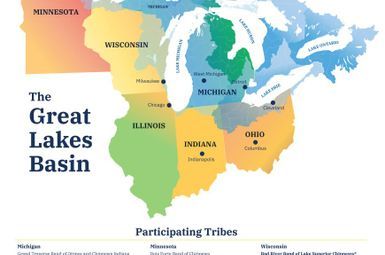
“Given that we sit in the heart of the Great Lakes and 21% of the world’s fresh surface water, we wanted to explore the region’s plans to identify the highest-impact, most innovative and scalable multi-state opportunities. We looked for what was working, to inform ways to accelerate community-based climate action."
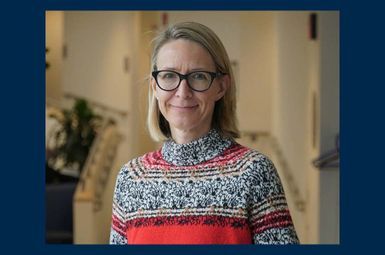
Extreme heat is America’s deadliest weather hazard, killing more people than hurricanes, floods, and tornadoes combined. Yet one obvious solution – increasing access to indoor cooling – is hindered by a lack of reliable data on which households have working air conditioning.
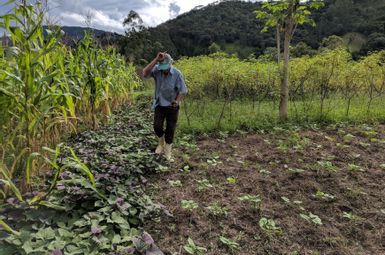
A new study published online April 4 in the journal Science finds that agricultural diversification comes with significant benefits, and very few negative effects.
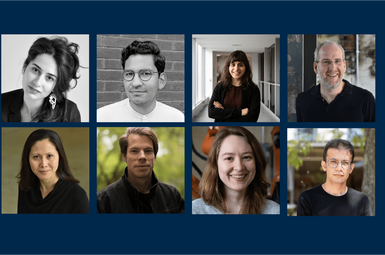
What materials and methods will allow us to design and construct low-carbon buildings? How can architects and designers promote social justice through community ownership of land? Through its Pressing Matters grant program, Taubman College has funded five faculty-led research and creative practice projects that address these questions.

The global challenges posed by climate change are widespread, impacting various aspects of human life, with water resources at the forefront of these challenges. As climate change advances, it is projected to exacerbate water scarcity and access issues, given the intensification of water-related hazards (such as hurricanes and flooding) and rising temperatures that will lead to sea-level rise and saltwater intrusion.

Improving the U.S. electricity grid is necessary to lower costs, boost reliability and help tackle climate change, but it will take some serious soul searching by the leaders of entities that control the grid.
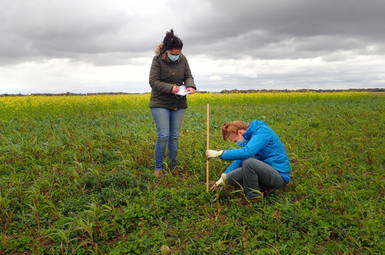
Rackham Ph.D. candidate Etienne Herrick-Sutton works with Great Lakes region farmers to identify strategies for improving the environmental and economic outcomes of cover cropping.
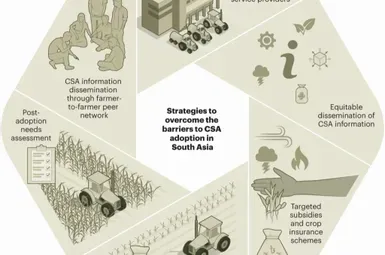
Despite the possibility of climate-smart agriculture improving food security, most CSA practices and technologies are not widely adopted in South Asia.
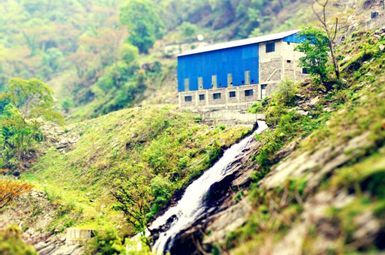
Four newly awarded sustainability “catalyst grants” at U-M are piloting innovative ways to bolster climate resilience and sustainability. Funded by the U-M Graham Sustainability Institute, these projects will explore renewable energy deployment in Nepal, climate justice in the Midwest, textile recycling innovation and equitable transportation planning.
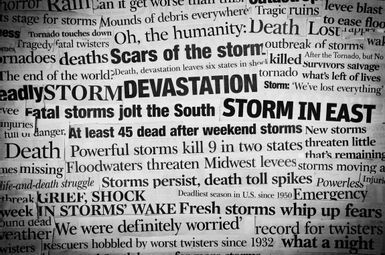
Concern for climate change grows—along with support for policies to reduce emissions—when people read about Americans being forced to move within the U.S. because of it. That’s in sharp contrast to learning about climate-induced moves to the U.S. by non-Americans, which doesn’t move the dial on climate change beliefs or policy support.
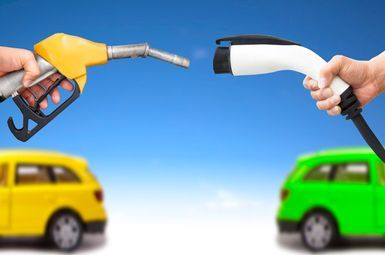
Is it actually cheaper to own an electric vehicle instead of a gas vehicle? It depends. U-M researchers say that where you live matters. For instance, a midsize SUV costs more to own in Detroit than in San Francisco—one of the most expensive cities in the country.

Ann Arbor and other cities across the Midwest and Northeast have been referred to by climate specialists as “climate havens,” natural areas of refuge that are relatively safe from extreme weather events such as intense heat and tropical storms.
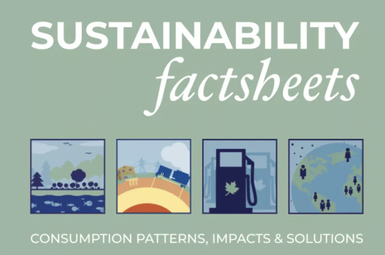
Each peer-reviewed factsheet presents data on patterns of use, life cycle impacts, and sustainable solutions. Updated annually by a current SEAS graduate student, the collection is a free resource to inform journalists, policymakers, business professionals, students, teachers and the public.
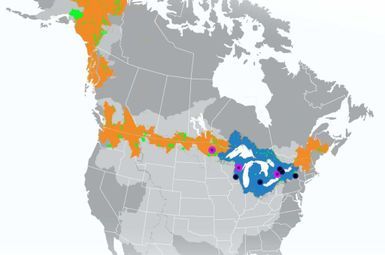
U-M researchers will lead a new effort to strengthen the climate change resilience of vulnerable communities that span international boundaries and jurisdictions. The U.S. National Science Foundation has awarded $5 million to U-M to establish the Global Center for Understanding Climate Change Impacts on Transboundary Waters.
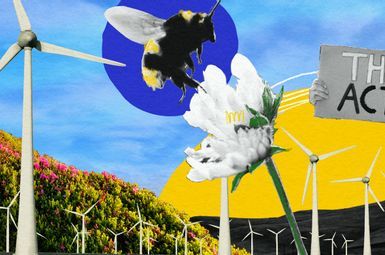
"Join the conversations already happening rather than remake the wheel. Climate anxiety is very real, and research shows individual actions don’t help reduce that, but collective action—joining groups, clubs, green teams, nonprofit organizations, local watershed coalitions—actually does reduce climate anxiety and eco grief."

"There’s a huge need for people who understand the natural environment and want to work in the urban setting. It’s a surprising gap where best and promising practices from natural resource management don’t make it into the urban planning and urban design space."

As climate change and population growth make water scarcity increasingly common, a much larger share of the global population will be forced to reckon with the costs of urban water scarcity. A new study sheds light on how households bear the monetary and nonmonetary costs when water supply is intermittent, rather than continuous—with policy implications that could help make urban water safer, more sustainable and more equitable.
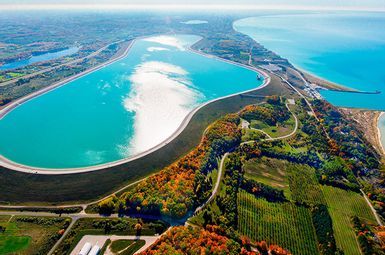
The Graham Sustainability Institute’s Carbon Neutrality Acceleration Program (CNAP) announced $1,160,000 in funding for six new faculty research projects. They tackle a range of carbon neutrality topics and augment the CNAP portfolio, which addresses six critical technological and social decarbonization opportunities: energy storage; capturing, converting, and storing carbon; changing public opinion and behavior; ensuring an equitable and inclusive transition; material and process innovation; and transportation and alternative fuels.
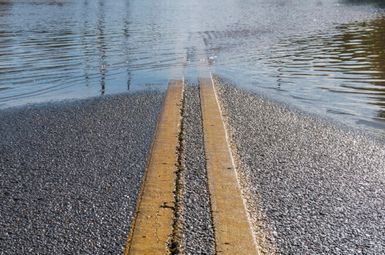
Michigan Sea Grant recently received $500,000 in funding to help improve resilience under future climate change scenarios in disadvantaged coastal communities in Michigan and Wisconsin. The project will assess flood risk for disadvantaged communities in Berrien County, Michigan, and Milwaukee, and will provide a framework to extend the analysis throughout the Great Lakes.
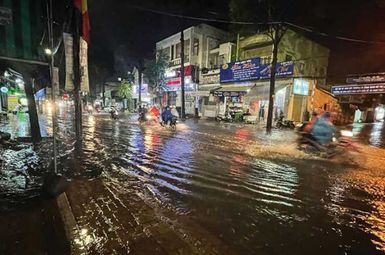
“It’s quite exciting to observe something as it’s happening. Many local experts are advocating for the implementation of new ideas about living with nature, water management, and dealing with climate change by adapting agricultural practices and other kinds of infrastructure rather than fighting against it."
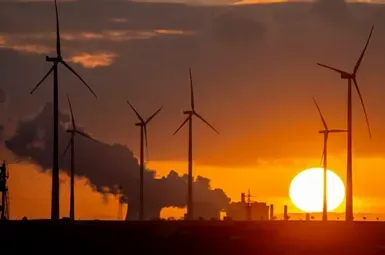
"From my vantage point at a large public university, I know firsthand how activism and energy of students, with support from faculty and other university communities, has galvanized our institution to make real commitments and progress toward carbon neutrality."

Hydrogen is an important energy carrier that can play a key role in reducing carbon emissions from heavy-duty vehicles and aviation, heating and distributed power, and industrial applications like steelmaking, glassmaking and semiconductor manufacturing. With growing interest around wider adoption of hydrogen and its potential economic and environmental benefits, U-M has launched a new initiative to support and catalyze multidisciplinary research involving the universe’s lightest and most abundant element.
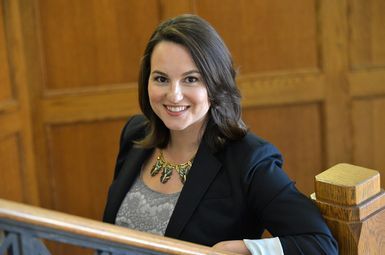
As climate change looms, policymakers must find ways to mitigate its effects. Many have turned to recycling in an effort to limit the amount of plastic in landfills, dumpsites, and the environment.
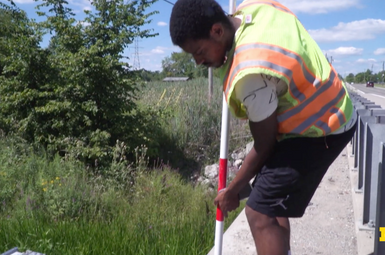
Flooding is the leading cause of property damage and deaths in the U.S. It’s bigger than earthquakes and forest fires put together. Branko Kerkez, an associate professor of civil and environmental engineering, and his students at the Digital Water Lab partnered with researchers at the U-M Center for Social Solutions to measure, better understand and prevent flooding and its aftermath in some of the most vulnerable communities.
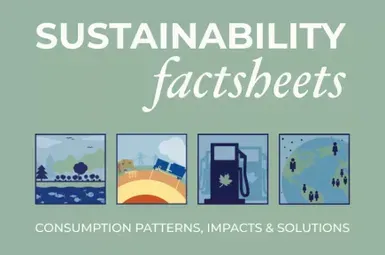
Did you know that the average North American household uses roughly 240 gallons of water daily? Or that the Department of Energy estimates that 75% of U.S. energy will come from fossil fuels in 2050, which is widely inconsistent with IPCC carbon reduction goals? Did you know that just 16¢ of every dollar spent on food in 2020 went back to the farm, whereas, in 1975, it was 40¢?
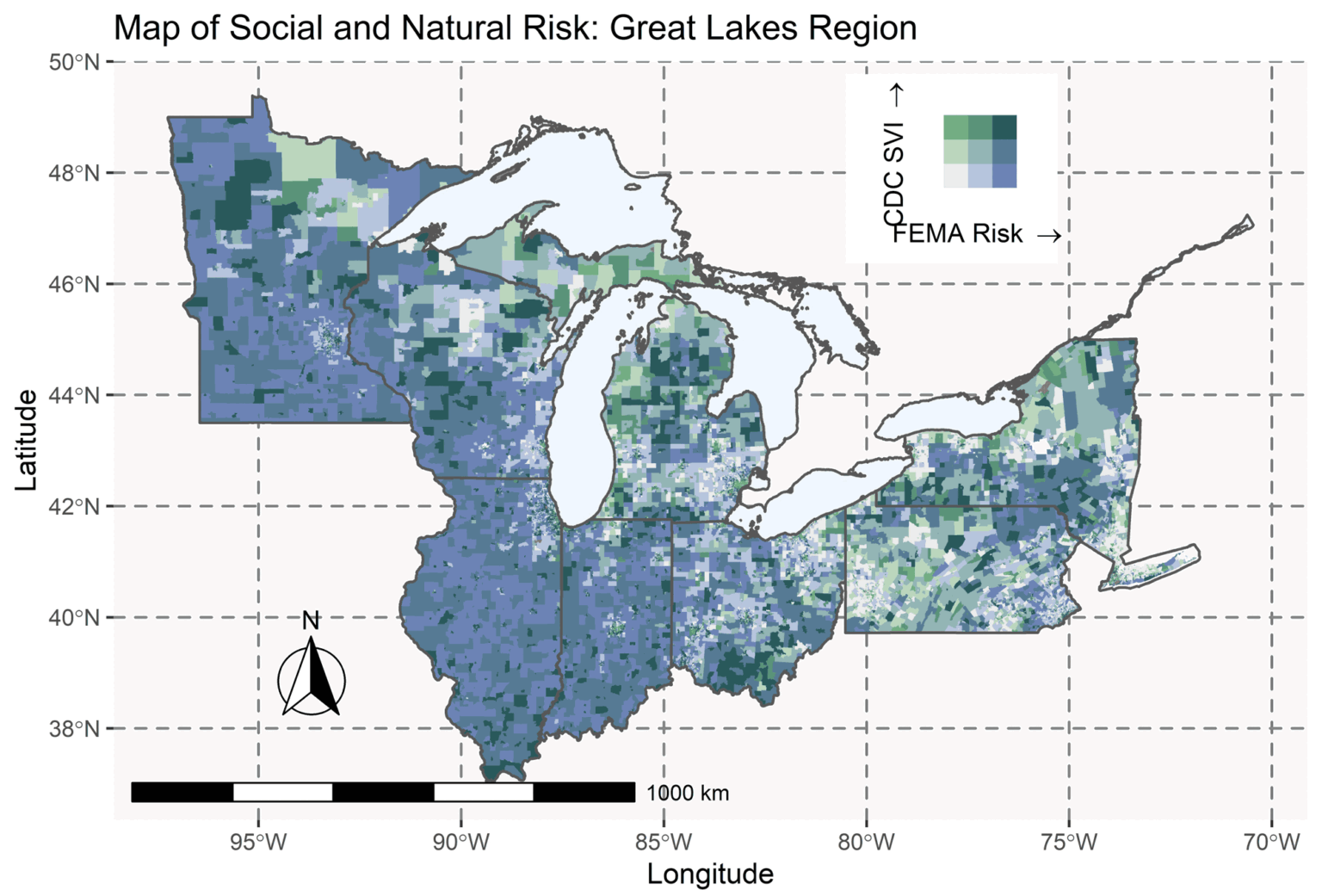
Communities in the Great Lakes region need to start planning now for a future that may include “climate migrants” who leave behind increasingly frequent natural disasters in other parts of the country. And user-friendly web-based tools can be a central part of that planning process.
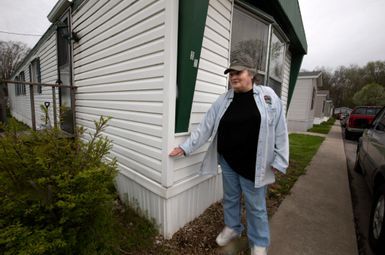
Many small and mid-sized communities like Goshen, IN simply don’t have the resources to tackle a global crisis like climate change on their own. So in 2018, Goshen was one of 12 cities that partnered with Great Lakes Integrated Sciences and Assessments (GLISA), an organization led by U-M that’s working to help small and mid-sized cities plan for a future that will be shaped by a changing climate.

As U-M works toward carbon neutrality, plans are moving forward for renewable purchased electricity, widespread geo-exchange heating and cooling systems, and innovative financing mechanisms.

Projects will pursue a range of carbon neutrality pathways, including carbon capture, renewable fuels, energy storage, aircraft electrification, solar power, chemical production, and circular economies.
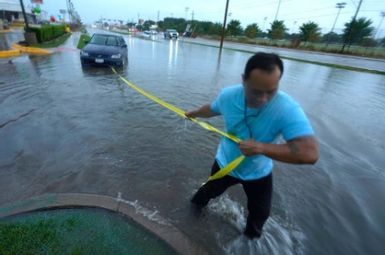
Floods are complex events, and they are about more than just heavy rain. Each community has its own unique geography and climate that can exacerbate flooding, so preparing to deal with future floods has to be tailored to the community.
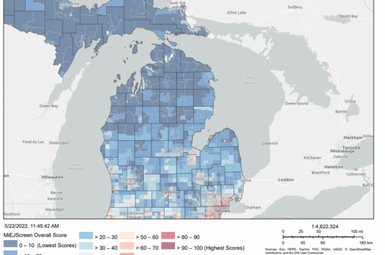
Because environmental justice screening tools will affect community members impacted by disproportionate environmental burdens, soliciting input from the environmental justice community is crucial to developing and using screening tools, according to a new study from U-M.

For the environmental movement to be effective, it must be something that everyone participates in, marine biologist and climate policy expert Ayana Elizabeth Johnson said.

As U-M advances its commitments to climate action and universitywide carbon neutrality, it joins more than 25 universities, nonprofit organizations, corporations and local governments in founding the Midwest Climate Collaborative.
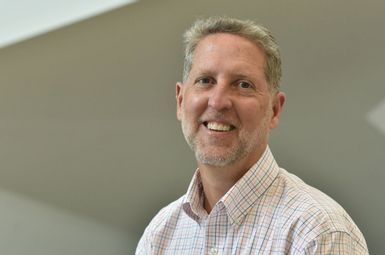
In recent years, lakeside communities have struggled to cope with the effect of rising water levels and erosion on the beaches that have made them such attractive places for vacationers and residents alike. As a professor of urban and regional planning, Richard Norton’s work explores how humans can safely adapt to these environmental changes, while also protecting the unique ecosystems that make the Great Lakes region special.
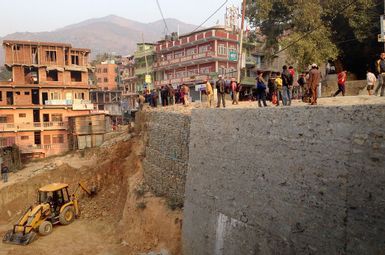
How do human and social capital affect people in the aftermath of a disastrous shock? Ford School professor Elisabeth Gerber and School for Environment and Sustainability professor Arun Agrawal examined the question with data gathered before and after the 2015 earthquakes in Nepal, using a novel machine-learning based analytical approach.
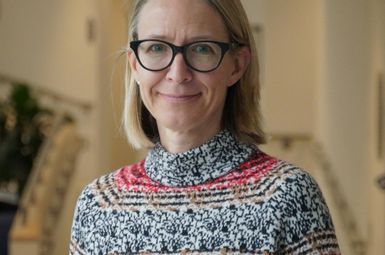
“Meeting the climate challenge means making significant changes to our daily lives. One important component of that change is our energy landscape. Shifting from coal, gas, and natural gas toward cleaner renewables will require building new infrastructure.”
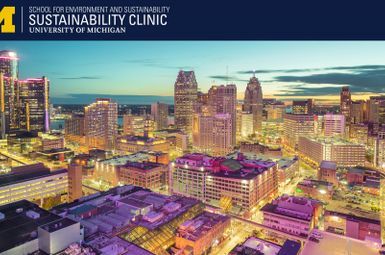
The School for Environment and Sustainability has launched the SEAS Sustainability Clinic, which aims to help the city of Detroit and nonprofits serving it address the impacts of climate change on the natural and built environment, human health and city finances, while working to enhance sustainability policy and action.
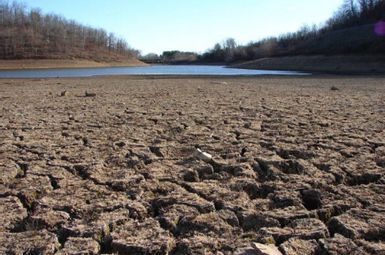
What actions are we taking to adapt to climate change around the world, and how successful are our efforts? A global network of 126 researchers sought to answer those questions, producing the most systematic and comprehensive assessment of implemented human adaptation to climate change to date.